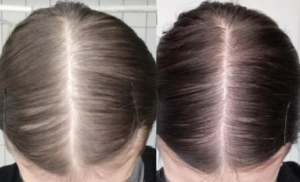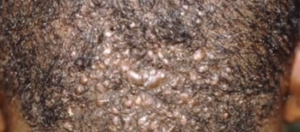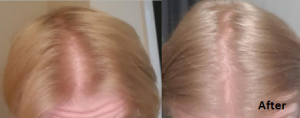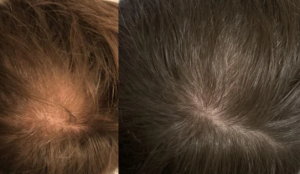I have sex multiple times a day, 2-3 days a week, and masturbate quite regularly. How would this impact me while on fin?
Multiple articles suggests that creatine does contribute to hair loss: see here: https://www.ncbi.nlm.nih.gov/m/pubmed/19741313/
So, personally, I straight up just don’t want to use finasteride and don’t want to be on a pill that regulates my hormones for the rest of my life. If you have a good donor region, like 8000 potential grafts, can you forgo finasteride and still get a good hair result just from a transplant(s)?
Men under 30 have a higher risk of losing native or miniaturized hairs with a hair transplant. The older you get, the less the risk. Finasteride prevents the loss of these miniaturized hairs, but as you point out, if you are willing to spend the money and your have 8000 lifetime grafts, you can do a hair transplant without finasteride.
I’ve been on finasteride for over 2 years with good results. But now I’m experiencing some erection issues. The sex drive is there, but the erections are very weak and generally need manual stimulation. In your experience how long does it take for this to go away once stopping the medication? I was also on an SSRI, so it’s hard to say which medication is actually causing these issues. I’ve been off the SSRI for almost two months, and my sex drive came back quite quickly, probably within two weeks of stopping. I’ve been off of finasteride for two weeks now and haven’t really noticed any difference, so I’m getting a little nervous. Anyway, hope to hear from you and have a great holiday!
Give it time and then you will know. Some men have ED problems just as they get older and that is why Viagra and Cialis have done so well as a drug for treating ED. Heavily focusing on sexual performance often leads to some ED, a psychological effect but if your ED is caused by finasteride, then speak with your doctor about finasteride and your ED.
You know it caused all the little tiny hair to grow longer and darker. My twin brother who doesn’t take minox is still hairless, but me this is really shocking. Will it keep elongating and growing longer if I continue taking minoxidil? Does reducing the dosage stop this process, or will i have to stop completely to avoid the Hypertrichosis I am getting? thanks doc ( sry for my english, I am french) .
It will take some time for the hypertichosis to disappear if you stop the minoxidil or reduce the dose. You might try reducing the dose first but it might take a few months to see
https://www.southernliving.com/fashion-beauty/hairstyles/hair-botox
This is beyond my imagination and not reasonable. Botox used in some form to enhance hair or injected into the scalp to reduce scalp sweating.
I wana add zinc. I heard its good for libido. Some people say its good for the hair and i heard from other places its can cause hair shedding.
https://peerj.com/articles/3020/
“Our data show that, in a cohort of men exposed to 5Alpha-RIs, the duration of 5Alpha-RI exposure was a more accurate predictor of PED (Persistent Erectile Dysfunction) than many known risk factors, including age, hypertension, diabetes mellitus, cigarette smoking, ethanol abuse, obesity, and depression. In our data, confounding by age or extent of healthcare utilization did not account for the increased risk of PED associated with longer 5Alpha-RI5Alpha-RI exposure duration (Table 3, Figs. 2A and 2B). Also, duration of finasteride exposure proved to be a more accurate predictor of sexual dysfunction than higher dose vs lower dose of finasteride, likely reflecting that finasteride exerts near-maximal inhibition of 5Alpha-RI-DHT synthesis at a dose of 1 mg (Drake et al., 1999; Roberts et al., 1999; Shukla, 2011).”
“In conclusion, among men with5Alpha-RI exposure, duration of 5Alpha-RI exposure was a more accurate predictor of PED (Persistent Erectile Dysfunction) than all other assessed risk factors except prostate disease and prostate surgery. Among young men with 5Alpha-RI exposure, duration of 5Alpha-RII exposure was a more accurate predictor of PED than all other assessed risk factors. For each 108 young men exposed for >205 days to the finasteride dose typically used for androgenic alopecia (1.25 mg/day), one additional young man experienced PED when compared to those men with shorter exposure. The median duration of PED in young men was 1,534 days. We expect that our finding of an association between debilitating sexual dysfunction and exposure to finasteride or dutasteride will be of particular interest to prescribers and patients considering medical management of androgenic alopecia or symptomatic treatment of prostatic hyperplasia.”
About 3 years ago at age 28 I noticed the hair in and around my crown area was quite a bit thinner than the rest of my head. So I did some research and found that Minoxidil might do the trick. It was cheap and effective for a lot of people. I ordered the Kirkland brand stuff, and began a routine. I remained with the same thinning look so after 3 years, I didn’t think that I was getting any benefit from minoxidil and then stopped it. I had a massive hair shed within a couple of months.
While you were taking minoxidil you may have been replacing your native hair with new hair that was induced by the minoxidil and you just didn’t see this ‘swap’ happening. When you stopped the minoxidil, all of the new hair induced by minoxidil which was addicted to it, fell out. You might try going back on the minoxidil.
http://www.koreabiomed.com/news/articleView.html?idxno=10914
The focus on the drug is to create or enhance collagen production. I was able to find some articles in support of hair growth claims, they are:
https://pubmed.ncbi.nlm.nih.gov/32255530/
https://onlinelibrary.wiley.com/doi/abs/10.1111/jocd.13729 (medication delivered by injection)
https://www.sciencedirect.com/topics/pharmacology-toxicology-and-pharmaceutical-science/dexpanthenol (a review of more articles)
https://www.webmd.com/vitamins/ai/ingredientmono-853/pantothenic-acid-vitamin-b5
https://www.ncbi.nlm.nih.gov/pmc/articles/PMC5599691/
“2 case reports where notable improvement in AA was observed after FMT was performed for recurrent CDI. Further study of gut microbiota in patients with autoimmune alopecia may elucidate disease mechanisms and provide evidence to support clinical trials of FMT in this population for whom treatment options are currently limited.”




